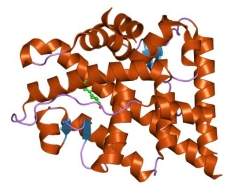 |
| Gene AR (receptor de andrógeno) funciona de forma diferente em homens e mulheres, desempenhando papéis opostos no câncer de mama e no câncer de próstata. |
Pesquisadores norte-americanos descobriram que um gene - conhecido como receptor de andrógeno (AR) - está associado tanto com o câncer de próstata quanto com o câncer de mama.
Contudo, eles verificaram que este mesmo gene tem efeitos opostos nas duas doenças.
No câncer de próstata, o AR promove o crescimento do câncer quando o gene está "ligado".
No câncer de mama, o AR promove o crescimento do câncer quando o gene está "desligado", como acontece frequentemente após a menopausa, quando cessa a produção AR nas mulheres.
Gene com gênero
A pesquisa não apenas revela que ação do gene é diferente entre homens e mulheres, como também mostra a dificuldade de utilização das descobertas genéticas sem um acompanhamento muito cuidadoso dos efeitos gerais de cada gene.
É por isto que cada vez mais os cientistas se recusam a falar em "gene disso" ou "gene daquilo".
Esta nova pesquisa, por exemplo, demonstra que o tratamento do câncer de próstata e do câncer de mama exigem abordagens completamente opostas em relação a um mesmo gene.
No tratamento do câncer de próstata, a estratégia deve ser bloquear o AR; já no câncer de mama a estratégia deve ser a de apoiar a produção do AR.
Brócolis e vinho tinto
Os pesquisadores se concentraram em saber se a molécula do receptor de andrógeno (AR) dá algum indício de uma proteína supressora de tumores chamada PTEN.
Já se demonstrou um forte efeito da PTEN, por exemplo, no combate ao câncer de próstata pela ação do sulforafano, um composto presente nosbrócolis.
A PTEN também está envolvida na ação anticâncer dos polifenóis presentes no vinho tinto.
A pesquisa descobriu que o AR inibe a expressão da PTEN em células do câncer de próstata, mas estimula a expressão da PTEN em células do câncer de mama.
Isto explica porque a progressão do câncer de próstata está associada com a expressão aumentada do AR - uma estratégia comum de tratamento do câncer de próstata envolve bloquear o AR.
Por outro lado, a maioria dos cânceres de mama ocorrem no período pós-menopausa, após a cessação da produção de AR - a suplementação de AR é uma estratégia para o tratamento do câncer de mama.
Tratamento personalizado por sexo
Os cientistas concluíram que o comportamento conflitante do gene exige que se façam novas pesquisas para identificação de co-fatores que possam explicar esse comportamento e auxiliar no diagnóstico e no tratamento das duas doenças.
"Nossas observações ajudam a explicar porque o risco do câncer de próstata pode ser reduzido pela metade bebendo-se vinho tinto, que aumenta a expressão da PTEN," escrevem Charis Eng, Robert Silverman e Warren Heston, autores do estudo.
"Nossos dados também sugerem que o tratamento do mesmo câncer deve ser personalizado para homens e para mulheres," concluem eles.
O trabalho foi publicado na revista Oncogene.

